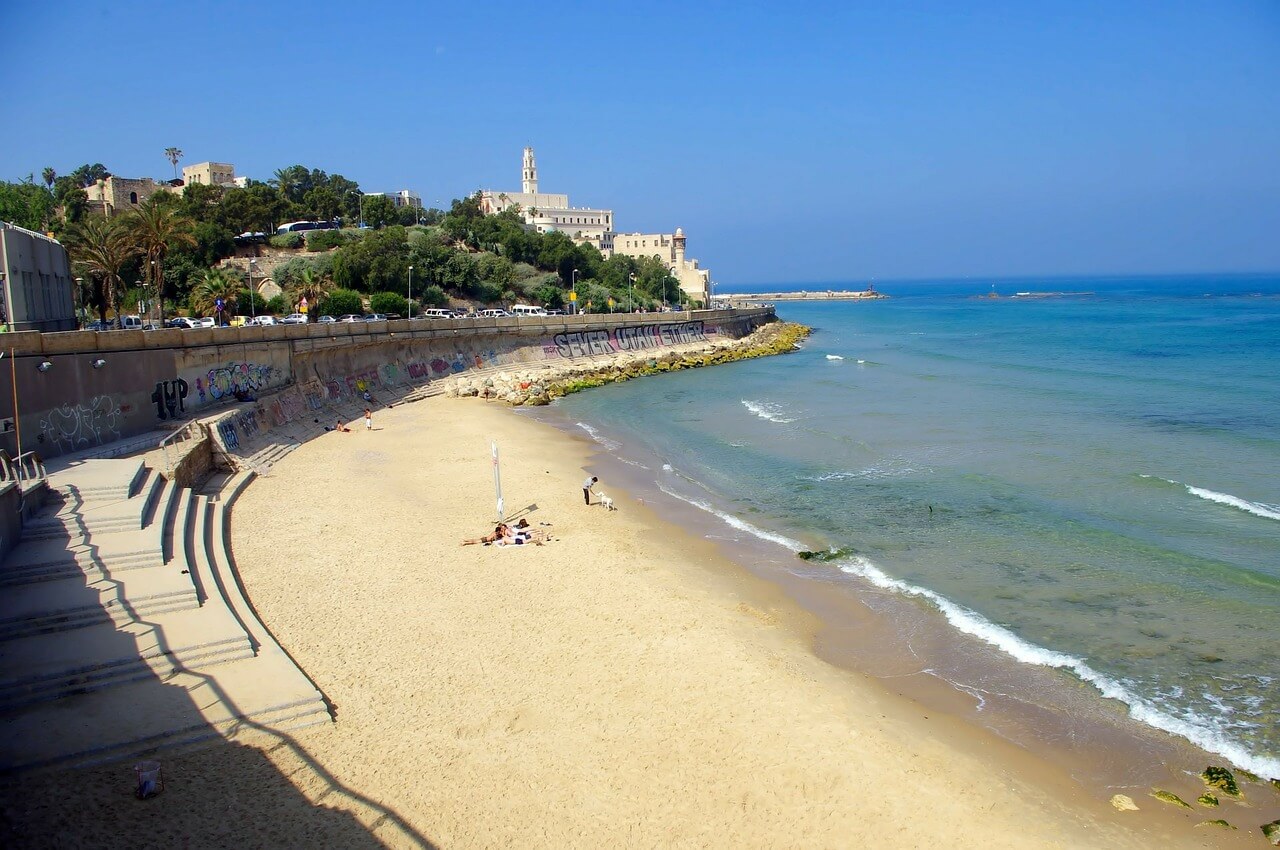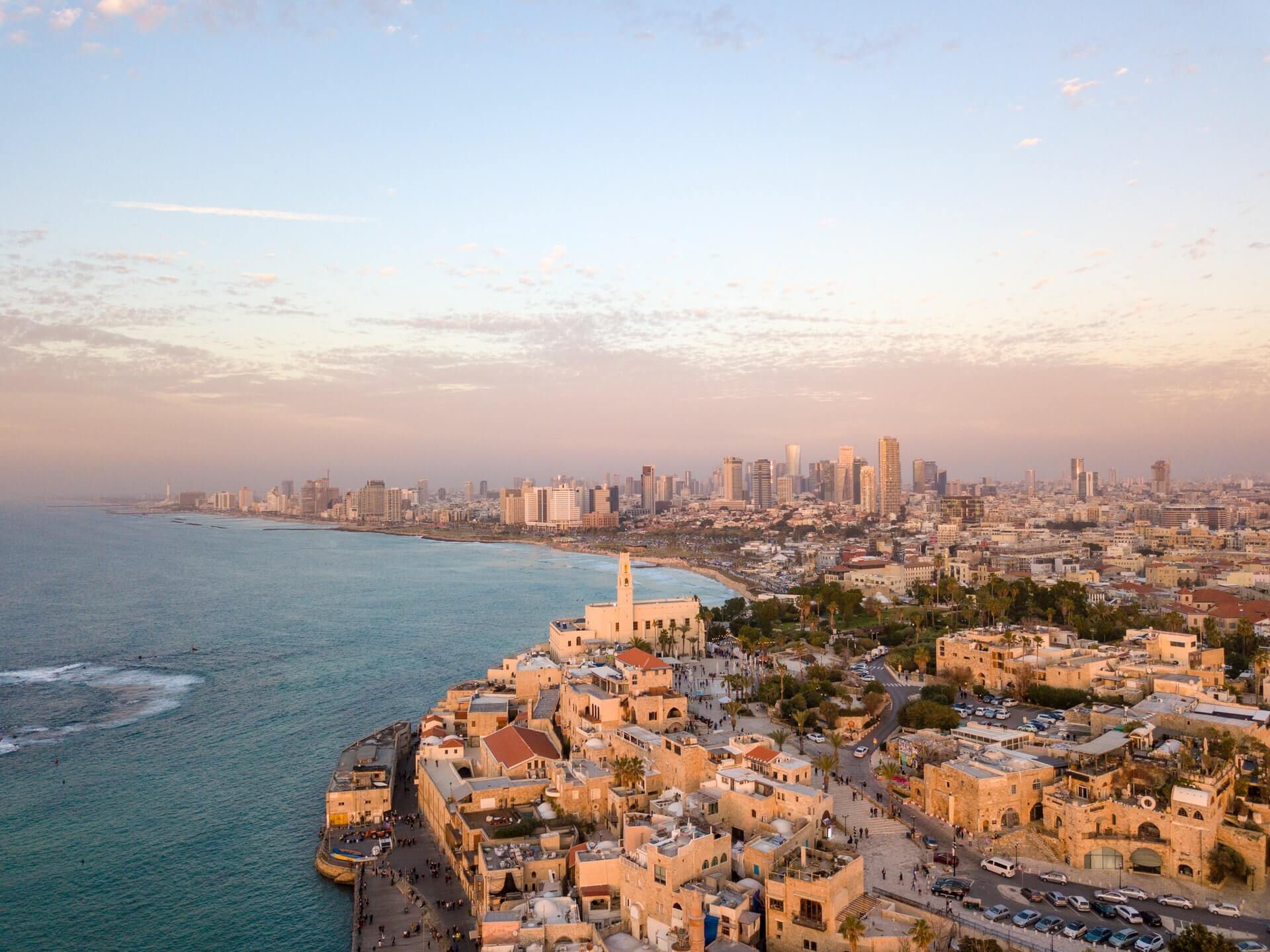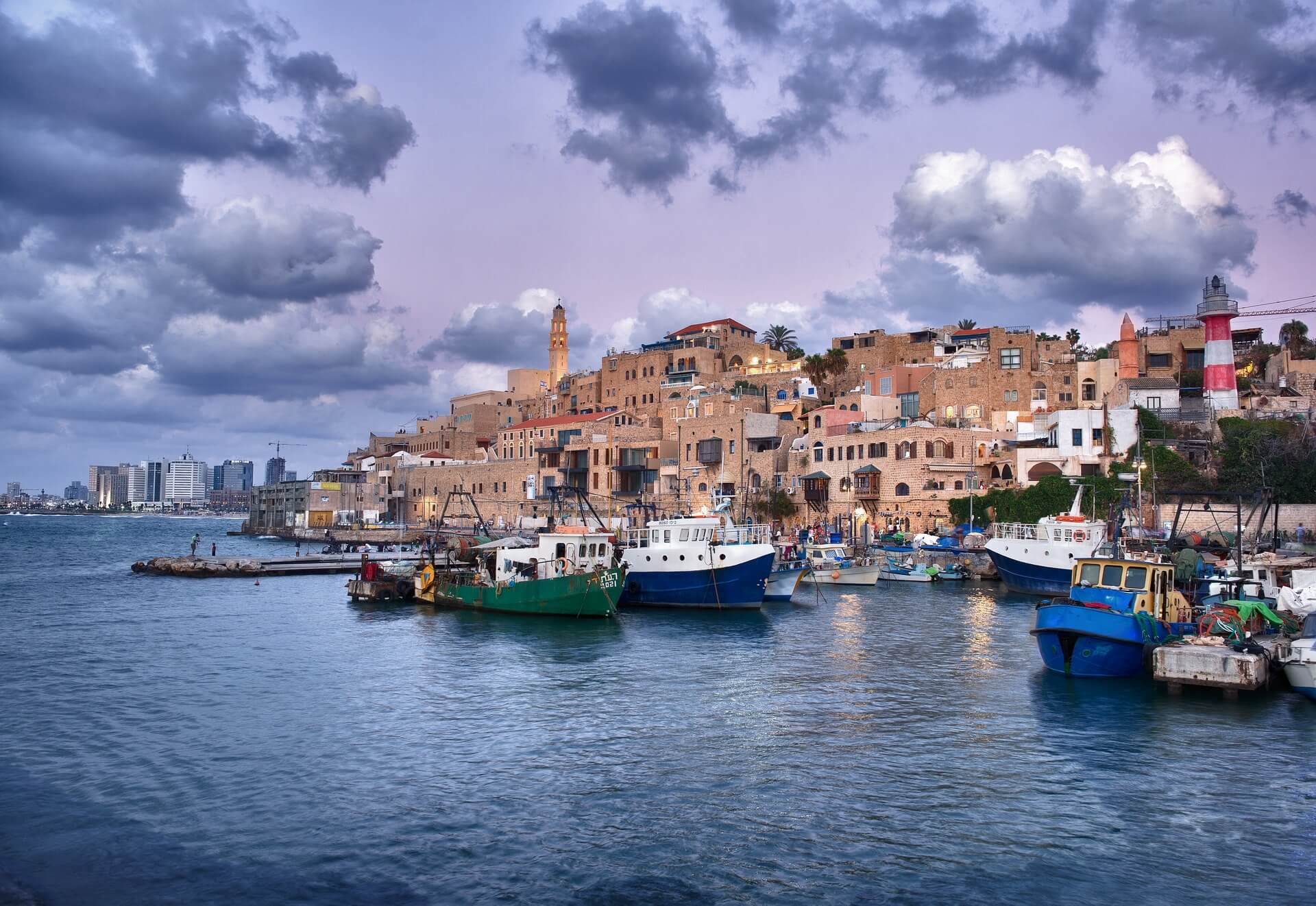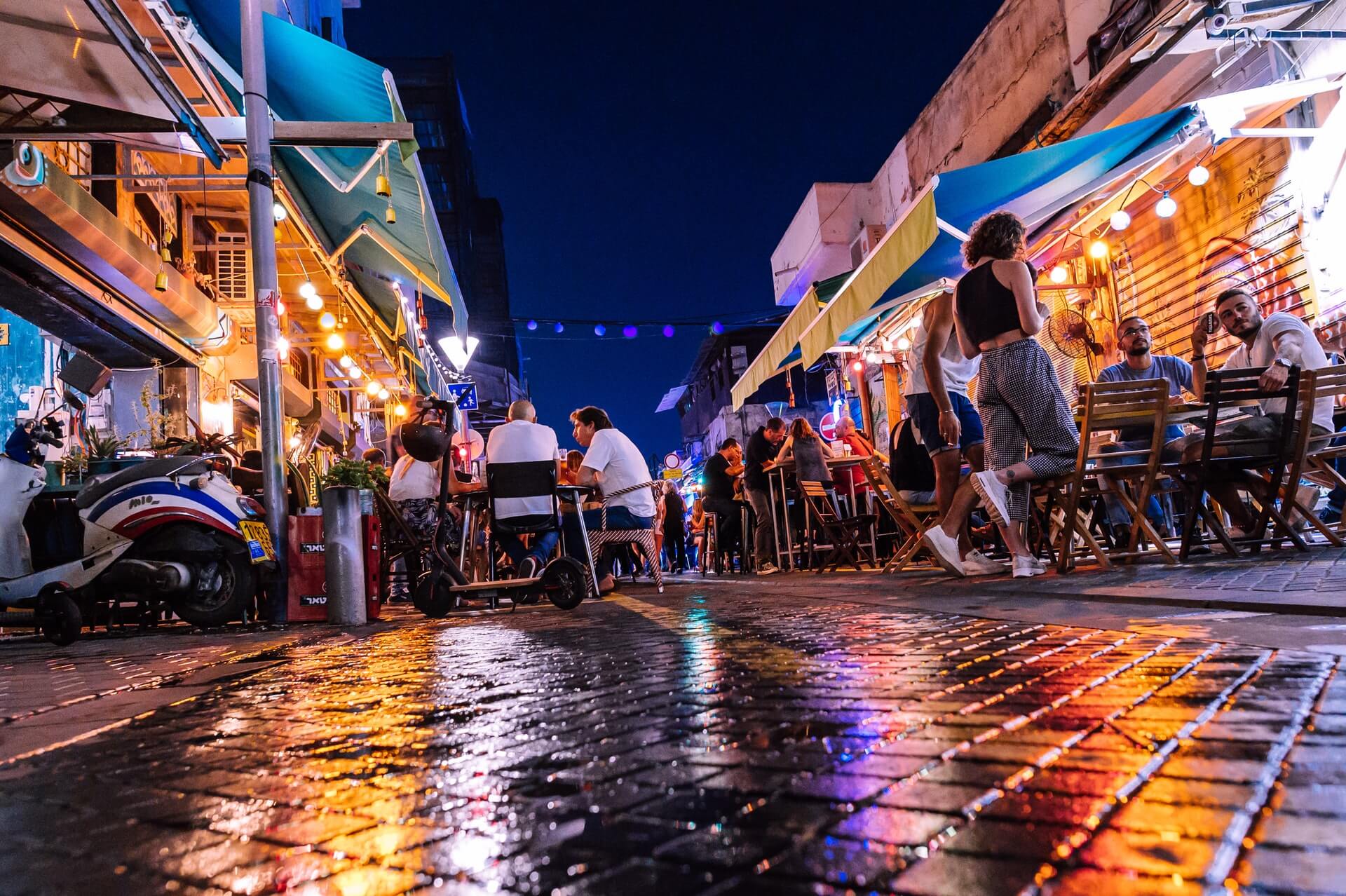Tel Aviv is one of the most vibrant cities on the Mediterranean Sea. It’s cool, funky, diverse, and with so many great things to do in Tel Aviv, there is no way you will be bored. All the Tel Aviv pictures prove how great the city is.
While many people skip it during their trip to Israel, I think it’s necessary to visit Tel Aviv and experience a completely different lifestyle than in the Old City of Jerusalem.
What’s so special about Tel Aviv?
Tel Aviv has more startups per capita than any other city globally, with Moovit and Fiverr to Invertex and SodaStream. Tel Aviv is not only the Startup City, but it also promotes itself as a “non-stop city,” much like Weiss’ legendary City that Never Sleeps. The Tel Aviv Global & Tourism organization, is eager to emphasize how Jaffa, which now forms part of southern Tel Aviv, has the world’s oldest port.
The World Heritage Site known as Tel Aviv’s White City was designated in 2003 because of its “exceptional example of town planning and architecture in the early 20th century,” which includes 4,000 Bauhaus constructions – making it the world’s largest concentration of the architectural style.
Despite Jerusalem being the country’s capital, several government offices, foreign ministries, public organizations, and major enterprises are based there. Despite its name, the city is becoming increasingly popular as a place to live and work. Tel Aviv was even dubbed the “cool Mediterranean capital of the New York Times,” identifying it as a cultural center for nightlife, cuisine, and liberalism among younger generations.

What does Tel Aviv mean?
The name “Aviv” in Modern Hebrew also means “spring,” one of the four seasons. As a result, Tel Aviv is the largest modern Israeli city and means “Spring Hill.” Because Passover is observed on 15–21 (or 22 outside Israel) Nisan near the start of spring, it has since become known as the “Holiday of Aviv.”
The White City, also known as the Tel Aviv Jewish Town, was built between the early 1930s and late 1940s by European-trained architects and was influenced by Sir Patrick Geddes’ urban design.
Tel Aviv is a city in Israel, located north of Jaffa and originally known as New Tel Aviv. Tel Aviv has become well-known for its high-quality restaurants and world-class cafe culture, as well as a wonderful nightlife scene. What should you know about Tel Aviv before a visit?
The best things to visit in Tel Aviv
Tel Aviv is a city full of life, and there are many things to do. Here you can find my favorite places in Tel Aviv that I recommend for anyone who wants to visit the White City:
- Neve Tzedek (the oldest neighborhood)
Neve Tzedek is the old neighborhood of Tel Aviv and one of its most beautiful neighborhoods. It’s not as touristy as Jaffa but still worth a visit because it’s very charming and has some great cafes, restaurants, and shops. Just make sure you visit during weekdays or early in the morning to avoid crowds!
- Jaffa Flea Market
The Jaffa Flea market is THE place to go if you want to experience a genuine Tel Aviv experience. The greatest thing about this flea market is that everything on sale there seems genuinely unique, including clothes and handmade crafts from local artisans. The only negative aspect is that if you want something nice, you’ll have to haggle like crazy!
- Dizengoff Street
Dizengoff street it’s the most popular shopping area in Tel Aviv and also one of its busiest streets. Here, visitors can find many international brands but what I appreciate about this place is that there are some local stores as well where everything feels authentic and original. For all those who like hipster cafes, Dizengoff square has even more: from tiny hidden cafes with great coffee options to large places for brunch or dinner on sunny days outside – choose whatever suits your taste best!
- Independence Hall & Walkway
The Independence Hall was erected on the site of Jaffa’s citadel in the final years of the 1940s. It is one of several Tel Aviv symbols, and when all of its lights are turned on at night, it looks even more lovely! You can also walk around this area surrounding Independence Hall to capture some nice photographs or simply enjoy the view of Tel Aviv! What are other important things when tel Aviv visit?
- Nightlife in Tel Aviv
If you’re looking for late-night activities, look no further than Ramat Gan’s Bar Giora (Sun–Thurs until midnight; Fri & Sat until dawn). The place offers live music every weekend from local bands, as well as interesting DJs spinning tunes at various events.
Tel Aviv also has a great nightlife scene with many cool bars and clubs where you’ll definitely have fun! What else does Tel Aviv have things to do? Tel Aviv beaches are free public spaces on the shoreline, providing an escape from city life as well as offering some great outdoor activities like surfing, jet-skiing, etc. If you’re planning to visit Tel Aviv, be sure to check out the weather conditions first because it might get too hot during the summer.

Tel Aviv weather
The ideal time to visit Tel Aviv is during the spring (March – April) and fall (September – November). The weather is fantastic, and the city has yet to receive a large number of visitors. Spring and Autumn are excellent times to visit as rates for accommodation are cheaper. Most tourists depart Tel Aviv between September and November when it’s known as Autumn. Hotel tariffs in prime locations or with beach fronts drop substantially during this period.
Summers in Tel Aviv are lovely, but they’re not as wonderful as the summer months of June through August. The sun is bright and hot, and the Mediterranean Sea is ideal for swimming. Reservations should be made two months ahead since this is peak season. Winter is the low season for tourism in Tel Aviv, which means fewer people visit during this time. With the exception of the weather, Tel Aviv offers a wonderful cultural scene. The city plays host to a variety of events that appeal to a wide range of tastes. Before making your hotel reservations, check out the city’s event calendar.
Tel Aviv: The top attractions in the city
Jaffa
The ancient Arab port city of Jaffa, with its preserved acropolis remnants and well-restored stone structures, is only a short stroll south of the modern Israeli city. The old town is particularly lively at night when visitors flood in from Tel Aviv.

Old Jaffa Harbor
St. Peter’s Monastery and the Old Port area are also not to be missed, as both are popular attractions at the flea market. St. Peter’s Monastery is a major draw for visitors, who come to soak up the noise of a genuine souk while they shop at local stalls and ambulant vendors. Despite significant gentrification, Jaffa remains a wonderfully calm location for a stroll that, despite its antiquity, retains its old-fashioned appeal.
Netanya
This popular seaside resort is located on a lovely golden-sand beach that extends for more than 10 kilometers. The shoreline is the main draw. Tel Aviv’s residents come here to catch some rays and spend time with family and friends during nice weekends. Downtown is jam-packed with cafés and restaurants, which buzzes with activity throughout the summer evenings. If you don’t want to deal with Tel Aviv’s hectic atmosphere, this might be an alternative for you. There are several accommodation alternatives in this area.
Yitzhak Rabin Center
The Yitzhak Rabin Center (formerly known as the Prime Minister’s Office) is home to the Israel Museum, which houses exhibits about Israel and Yitzhak Rabin – who was murdered by Jewish extremists after making peace with Jordan in 1995.
The National Center for the Performing Arts houses exhibits with meticulous detail, including a variety of archival films and photographs. They walk visitors through Israeli history from the early 20th century, focusing on Rabin’s life as a soldier and then as a government and country leader, up to his assassination.
Yemenite Quarter
The Yemenite Quarter in Tel Aviv is a picturesque area that has retained many of the city’s historic architectural features. It was first occupied by Yemeni Jews in the early 20th century, and there’s still a lot of history here.
The settlement is centered on Carmel Market, a popular, colorful market with fresh produce and Tel Aviv’s answer to Jerusalem’s renowned Mahane Yehuda Market. This is the place to go if you’re hungry in Tel Aviv and want a cheap dinner.
The Old Port Area
Namal is an ancient port area of Tel Aviv (also known as Namal) that has been thoroughly revived and turned into a trendy waterfront hangout spot with boutiques and coffee shops. The walkway along the boardwalk is popular among young people for strolling, while families flock to the location on weekends. Small private art galleries and a wonderful indoor market are located in the neighborhood.
There are always free live music concerts and other activities on weekends, making it fun for the whole family. If you have kids coming with you, this is an excellent location to visit since there’s usually a lot to keep them occupied.
The best places to stay in Tel Aviv
The city center is the finest location to stay in Tel Aviv. You’ll be in one of the safest parts of the city, with some fantastic amenities surrounding you. You’ll be within walking distance of the White City, which has stunning Bauhaus constructions and history. The city center offers a vast range of appealing bars and eateries as well as several intriguing shopping districts and markets.
The modern apartment with a balcony is located in the city center and offers easy access to all of the action. The beach and other tourism amenities are only minutes away by foot, as well as one of the city’s primary squares for sitting in and socializing, Dizengoff Square. With lots of buses and trains to use, getting around in the area is a breeze.

Finding one of the many amazing hotels will be the first thing on the itinerary as once you have sorted this out, you can really explore the city as it is extremely accessible from this neighborhood. There are frequent buses and taxis that can transport you to different parts of the city, and there are brilliant links to the Ben Gurion International Airport, with many hotels offering their own shuttle buses to pick you up and drop you off.
Though safe, Tel Aviv is a bustling metropolis with many people and activities. The city center, however, is by far the safest neighborhood, but you’ll have to allow security personnel to examine your bags and goods at markets, shops, malls, bus stations, cafés, restaurants, and nightclubs because they are very strict.
Pozrite si tento príspevok na Instagrame
Is Tel Aviv safe?
Tel Aviv, which is in Israel and a part of the continuing conflict between Israel and Palestine, maybe a thought. When you’re arranging a vacation to Tel Aviv, you might consider terror attacks from Gaza or concerns about terrorism. It’s only natural that these things come to mind when you are planning a trip to this city-state.
We are here to put your worries to rest. We’ve compiled this comprehensive Tel Aviv safety guide for you not to frighten or turn you off but rather to provide you with all of the travel advice and information you’ll need while visiting this amazing metropolis.
As you can see, Tel Aviv is well-protected against aerial threats. There are underground bomb shelters all over the city, which should tell you something. There have been recent warnings of rocket attacks from Gaza. It shouldn’t worry you, though; people in Tel Aviv are generally unaffected by this apparent danger, and many of its citizens go about their daily lives before going to work and partying into the night.
If you’ve never been to Tel Aviv, it is worth a trip. You can find out more about the city by reading our blog post or checking out these pictures of Tel Aviv on Instagram. There are so many things to do in this vibrant Mediterranean City that there will be no chance for boredom!
Tel Aviv has been ranked as one of the top cities to visit in 2018, and for a good reason. With its vibrant nightlife scene, booming startup community, amazing beaches alongside a Mediterranean climate all year round- you’re guaranteed not to be bored! The pictures above are just some of the reasons why people love Tel Aviv so much.


